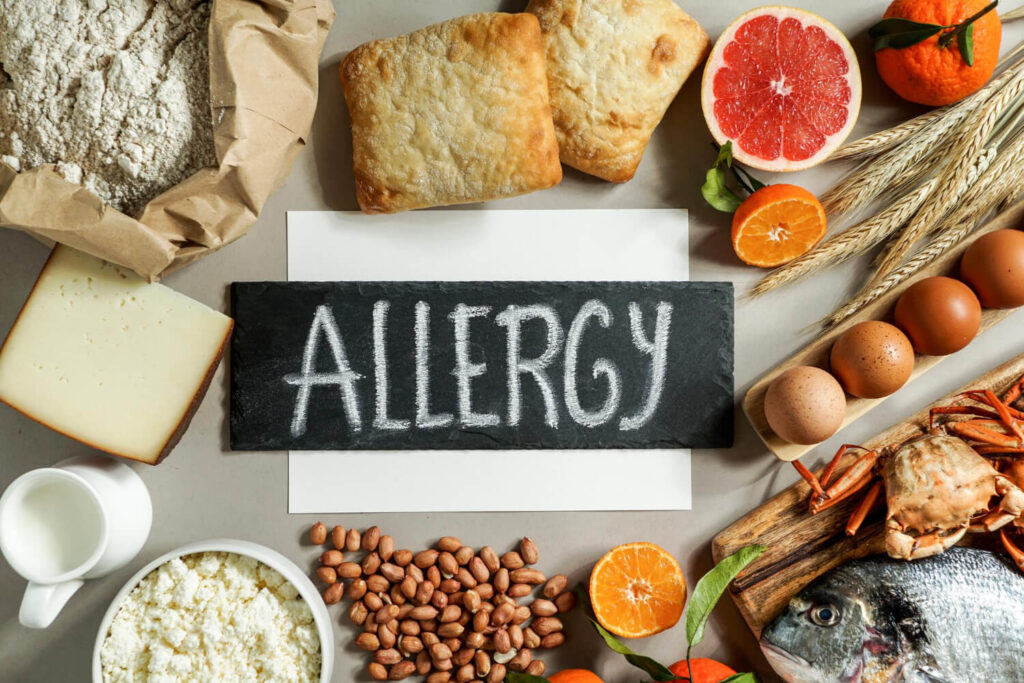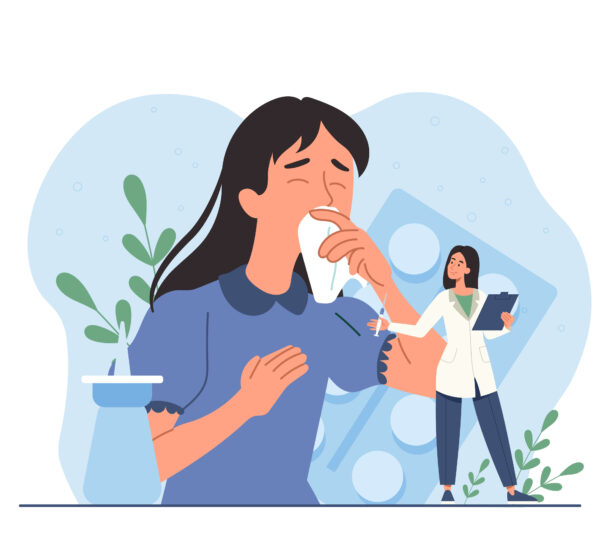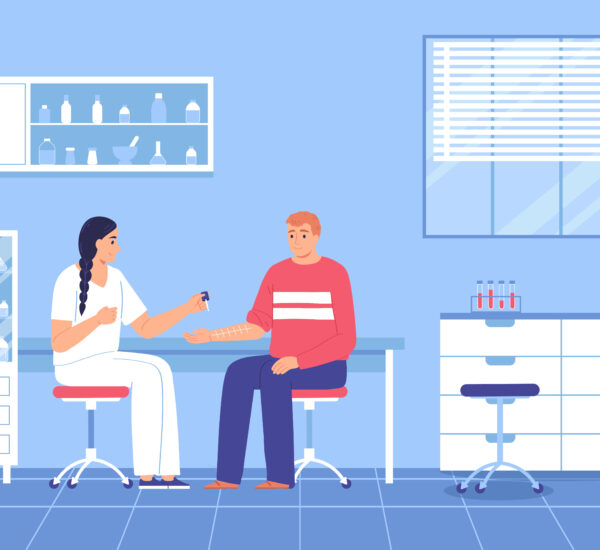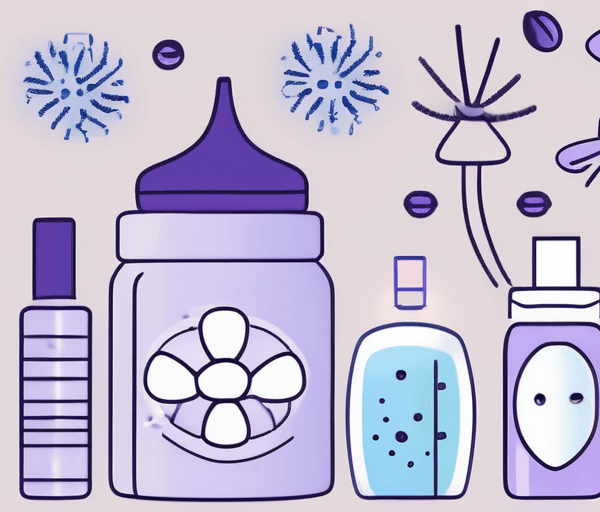One of the common hobbies that people want to enjoy is eating. It fulfills their emotions as they try food items in various cuisines. However, not everyone has this privilege due to food allergies. Individuals can develop food allergies at any age, which hinders them from trying certain foods such as nuts, shellfish, and more.
If you are one of those individuals who suffer from food allergies, you might be wondering how to manage allergic reactions. Of course, there will be instances where accidental consumption of food can occur. When that happens, it’s best to be prepared for what happens to avoid the risk of anaphylaxis.
Discover how to manage food allergies with this comprehensive guide! Let’s begin!
Understanding Food Allergies

Before anything else, it is important to understand that food allergies differ from food intolerances. While food allergies involve the immune system, food intolerances typically involve the digestive system and do not trigger an immune response. Food intolerances, such as lactose intolerance or gluten sensitivity, can cause symptoms like bloating, gas, or diarrhea, but they are not life-threatening like food allergies.
In terms of food allergies, they commonly occur due to the body’s abnormal immune response to certain proteins found in food. When someone with a food allergy ingests an allergenic food, their immune system mistakes the proteins as harmful invaders and triggers an allergic reaction. This reaction can range from mild allergy symptoms, such as hives or an itchy throat, to severe and life-threatening conditions like anaphylaxis.
Common Types of Food Allergies
While various foods can potentially trigger an allergic reaction, some are more commonly associated with allergies. Discover the common food allergies below and how to manage them.
Egg Allergy
One of the common food allergies is egg allergy, especially in young children. There are instances where the patients are only allergic to the yolk of the egg, while others can’t consume the whites.
Individuals with an egg allergy may experience the following allergy symptoms:
- skin allergies like hives or eczema
- runny nose
- watery eyes
- anaphylaxis
Managing Egg Allergy:
If you or someone you know has an egg allergy, it’s crucial to read food labels carefully as eggs can be found in unexpected products. Consider using alternatives like applesauce or mashed bananas in recipes that call for eggs. Always carry emergency medication like an epinephrine auto-injector in case of accidental exposure.
However, some researchers believe that patients can outgrow this type of allergy. For instance, patients outgrew their allergy by consuming baked products that used eggs as ingredients. While that worked for some people, the risk can still be present. So, to better manage this allergy, it’s best to seek help from a health expert.
Crustacean Shellfish Allergy
On the other hand, crustacean shellfish allergy is one of the common food allergies, with shrimp, crab, and lobster being the primary culprits. Some patients may feel tolerable symptoms, while others must visit an emergency room to alleviate the serious allergic reactions.
Common food allergy symptoms for this type may include:
- stomach pain
- throat closing
- itching and swelling of lips, tongue, etc.
- anaphylaxis
Take note that symptoms of an allergic reaction can range from mild reactions like itching or eczema to severe such as difficulty breathing or loss of consciousness.
Managing Crustacean Shellfish Allergy:
Unlike other food allergies, eating even a bit of seafood can be detrimental for patients with this allergy. The allergic response can be compared to digestive issues, which can be painful and uncomfortable to experience. It’s best to avoid shellfish and products containing shellfish to manage this allergy. Furthermore, try to be cautious when dining out and inform restaurant staff about your allergy to prevent cross-contamination.
Lastly, it’s best to meet with a health expert to understand the high risk of having this allergy. Consider asking the doctor for treatment options like oral medications for emergencies.
Soy Allergies
Food allergies like this type commonly occur due to the protein in the soy. Soy is a prevalent ingredient in many processed foods and Asian cuisine. That’s why, patients with this allergy should be alert, especially when dining out. Thus, it allows them to avoid trigger foods containing soy sauce, tofu, soy milk, etc.
Warning signs for patients with soy allergies:
- hives
- digestive issues (diarrhea, stomach pain)
- nausea
- anaphylaxis
Managing Soy Allergies:
The best way to manage food allergies like soy is through being vigilant and diligent in checking labels to be proactive about what you consume. Opt for whole foods and homemade meals to control ingredients better. When dining out, communicate your allergy clearly with restaurant staff and inquire about particular food items like soy-free options. Keep your emergency medication accessible in case of any allergic reactions.
Nut Allergy
Moreover, one of the most common food allergens is nuts, which the body’s immune system reacts to most of the time. There are proteins found in a nut that causes the allergic reaction. Like the crustacean allergy, nuts can also pose detrimental symptoms for patients with the allergy. Even a small amount of consumption can affect the individual’s health.
Common symptoms of food allergies to nuts:
- skin rashes
- swollen lips
- throat closing or feeling of tightness
- runny nose
- digestive issues
- anaphylaxis
Nut allergy is one of the most common and potentially severe food allergies, triggering reactions ranging from hives to life-threatening anaphylaxis. Peanuts can be found in various forms, including peanut oil, so individuals with this allergy must stay vigilant.
Managing Nut Allergy:
Strictly avoiding peanuts, tree nuts (such as almonds, walnuts, or cashews), and nut-containing products is crucial for those with this allergy. Also, it’s best to read food products and their labels before consumption. Try to ask health experts for management medications to prevent the risk of anaphylaxis.
When to Seek Medical Attention

In terms of analyzing food allergies, seeking proper medical evaluation is crucial. Allergies to certain foods can manifest in various ways, from mild discomfort to life-threatening reactions, making accurate identification of allergens essential. Consulting with an allergist or immunologist is the first step towards understanding and managing food allergies effectively.
Medical Tests for Food Allergies
If you suspect that you or a loved one may have a food allergy, it is important to undergo specific medical tests to pinpoint the allergen causing the adverse reactions. Skin tests, blood tests measuring IgE or immunoglobulin e antibodies, and oral food challenges are common methods used by healthcare professionals to diagnose food allergies. These tests help determine the body’s immune response to specific foods and aid in creating personalized management plans.
Interpreting Test Results
After completion of medical tests for food allergies, the healthcare provider will carefully analyze the results to make an accurate diagnosis. It is essential to note that a negative test result does not always rule out a food allergy, as false negatives can occur. Conversely, a positive test result does not automatically indicate a severe allergic reaction. The healthcare team, comprising allergists and other specialists, will consider the test outcomes alongside the individual’s medical history, symptoms, and physical examinations to provide comprehensive care.
Prevention of Food Allergies
Adjusting Your Diet
After a food allergy diagnosis, adjusting your diet to avoid allergenic foods becomes crucial. It is important to work with a registered dietitian or nutritionist to develop a balanced, allergen-free eating plan. These professionals can assist in finding suitable alternatives and ensuring proper nutrient intake. A diversified diet is essential for meeting nutritional needs, especially when eliminating entire food groups.
When transitioning to an allergen-free diet, it’s essential to be mindful of hidden sources of allergens. For example, some sauces, dressings, and processed foods may contain allergenic ingredients that are not immediately obvious. Reading ingredient lists meticulously and being aware of alternative names for common allergens can help prevent accidental exposure. Additionally, exploring new recipes and cooking methods can add variety and excitement to your allergen-free meals.
Reading and Understanding Food Labels
Learning to read and understand food labels is an essential skill for individuals with food allergies. Food packaging should clearly indicate the presence of common allergens in the ingredient list or through separate “may contain” or “manufactured on shared equipment” warnings. Familiarizing yourself with food labeling regulations in your country and knowing how to interpret ingredient lists and allergen information significantly reduces the risk of accidental exposure.
Moreover, staying informed about cross-contamination risks is crucial when managing food allergies. Cross-contact can occur when allergens are unintentionally transferred from one food to another, typically through shared equipment or preparation surfaces. Being vigilant about cross-contamination in home-cooked meals and restaurant dishes is vital for preventing allergic reactions. Communicating your food allergies clearly to food service staff and asking about their allergen protocols can help ensure a safe dining experience.
Avoidance and Minimizing Exposure
The most effective way to manage food allergies is to avoid allergenic foods entirely. In social situations, individuals with food allergies should inform hosts and waitstaff about their condition to ensure the food won’t trigger an allergic reaction.
Furthermore, individuals with food allergies can benefit from creating a personalized emergency action plan that outlines steps to take in case of accidental exposure. This plan may include detailed information about symptoms, emergency contacts, and the location of emergency medications like epinephrine auto-injectors. By having a well-thought-out plan in place, individuals can feel more prepared and confident in managing potential allergic reactions.
Medications and Therapies for Food Allergies
While there is currently no cure for food allergies, medications, and therapies can help manage symptoms and potentially reduce the severity of reactions. Antihistamines can relieve mild allergic symptoms, but for severe reactions, epinephrine auto-injectors are necessary to treat anaphylaxis.
It is essential for individuals with food allergies to work closely with healthcare providers to develop a comprehensive management plan. By partnering with knowledgeable professionals, individuals can receive tailored support and stay informed about the latest advancements in food allergy management.
Final Takeaway
Managing food allergies is an ongoing process that requires dedication, education, and vigilance. By understanding the different types of food allergies and how to manage them, every individual with such conditions can live better. In short, being proactive about your health is vital to take steps towards managing allergies.
If you need assistance in identifying and managing your food allergy, we can help you. Book an online consultation with an allergist and immunologist today!



